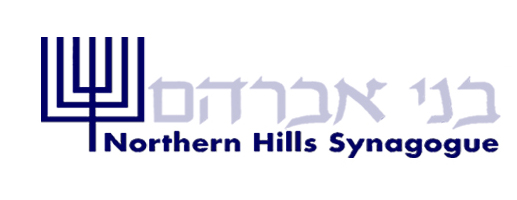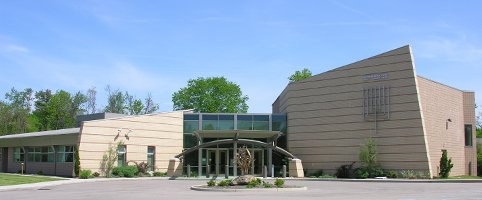The Israeli poet Yehuda Amichai wrote a poem called “The Real Hero,” in which he proposed that the real hero of the akedah is not Abraham or Isaac, but the ram. After all, it is the ram who died. I think that this poem is a critique of the use of the akedah story in conventional Israeli literature, in which the focus is on Abraham and Isaac and their “sacrifices,” seen as prototypes of the sacrifices of modern Israelis.
I would like to apply a similar turn-around to some traditions concerning the ram and its horn. First, let me prepare the ground a little by reminding you of those traditions. There is a well-known midrash, from the Tanhuma, in which God says to Abraham, after the resolution of the story, “When your descendants get into trouble in the future, they should blow on the horn of a ram like this one, and I will remember what you were ready to do for me, and I will save them."
The theme of the shofar’s reminding God to take care of the Jewish people occurs also in our Rosh Hashanah prayers, in the Zikhronot section of Musaf, where we say, “Remember the time when our ancestor Abraham bound his son Isaac on the altar, suppressing his compassion in order to do Your will wholeheartedly. Similarly, may Your compassion suppress Your anger at us.”
A poem by Yehuda ibn Abbas recited in the Sephardic liturgy at the time of the shofar blowing begins with the words which were on the front of this year’s congregational New Year’s greetings: Et sha-arei ratson l’hipateah? (At the time when the gates of mercy open), and it includes the words, ”O remember on my behalf, on the day of judgment, the one who bound, the one who was bound, and the altar.”
According to Avot 5:9, the ram of the akedah was created at twilight at the end of the 6th day of Creation. That means that the ram and its horns are both in and outside of Creation. They are part of the world of our experience and yet point beyond it. Furthermore, according to the midrash Pirke deRabbi Eliezer, one horn of the ram was sounded at Sinai when the Torah was given, and the other will be sounded to announce the coming of the Messiah. Thus, the akedah and the ram connect us with Creation, with Revelation, and with Redemption.
Now comes the turn-around. If, in the traditional formulation which I have presented, the sounding of the shofar reminds God that we need His help, I would like to say that it reminds us of how God needs our help, in particular, of how we are called to be God’s partners in Creation, in Revelation, and in Redemption. At Genesis 2:15 we read that God put human beings in the garden l’ovdah ul’shomrah (to work it and to keep it). I take that phrase as the key to the proper human use of the earth and its resources, and it corresponds to the contemporary buzz-word “sustainable development”.
I know that some of you question this whole area of concern:
- Is there really a kind of climate change that could be called “global warming”
- If there is global warming, are human actions like greenhouse gas emissions a major cause of it.
- If human actions are a cause, should major economic burdens be undertaken to slow it down or stop it.
With regard to what is happening, here is part of a recent report from the National Academy of Sciences: As part of its most comprehensive study of climate change to date, the National Research Council today issued three reports emphasizing why the U.S. should act now to reduce greenhouse gas emissions and develop a national strategy to adapt to the inevitable impacts of climate change.
These reports show that the state of climate change science is strong. The compelling case that climate change is occurring and is caused in large part by human activities is based on a strong, credible body of evidence, says Advancing the Science of Climate Change, one of the new reports.
With regard to the cost, I would point out that the question is not whether or not to incur it, but whether we shall pay now or later. It is not my purpose this morning to prescribe a plan for slowing down global warming. My purpose is to remind you that addressing that problem is part of our religious task of acting as God’s partners in maintaining Creation. Our responsibility with regard to Revelation is to be part of its continuous unfolding.
The image of the two tablets of the Law descending from heaven is a problematic one. It represents part of reality, but another part is represented by the saying from Seder Eliyahu Zuta, “The Torah was given to Israel, like wheat to be ground into flour.”
We, the Jewish people, are an essential part of the future of Torah. The interpretive community is essential to the unfolding of Torah. In stressing that point, I am rejecting the idea that the Torah text speaks for itself, that there is no need for interpretation. We have to try things out, to live them, and that is how Torah goes on. No Jewish organization or movement has a monopoly on truth or a monopoly on Torah, and we can learn something from all groups. However, I believe that the approach to Torah generally represented by Conservative Judaism is the soundest.
On the one side, many people are attracted by the certainty and simplicity of absolutist or fundamentalist views, but I will tell you that their certainty is based on illusion. On the other side, many people approach questions of Jewish religious life basically as questions of marketing: which position is going to be the most attractive. I am very much in favor of using the best methods available to present Judaism, but, ultimately, our religion is not marketing, or synagogue membership, but Judaism. Forms of Judaism based primarily on marketing considerations are devoid of what Martin Buber and Franz Rosenzweig called inner power; they are what Jeremiah called broken cisterns which cannot hold water. (By the way, the two extremes which I am criticizing are not necessarily Orthodox and Reform Judaism; I am criticizing ways of thinking, not organizations.) I see the task of redemption in which we must join God as having two aspects. One is social justice, and the other is the support of Israel – the Jewish State in the Land of Israel.
Recently, the Census Bureau’s new figures on poverty in the United States were released. They showed that an additional 2.6 million Americans slipped into poverty last year, that the number of Americans living in poverty is the highest in the 52 years that the Census Bureau has been keeping statistics on the subject, and that the percentage of Americans living in poverty (15.1) was the highest since 1993. (By the way, I know that there are problems with the statistics on poverty, but I think that the general thrust of the new report is probably correct.)
This situation is a problem for us. On several occasions, I have referred to an interview that Moshe Unna, one of the leaders of the religious kibbutz movement, gave to Israeli radio. The interviewer asked what the greatest religious problem in Israel was, and Unna replied, “The gap between the rich and the poor”. The interviewer said, “You misunderstood me. I meant the greatest religious problem.” Unna replied, “I understood you. The gap between the rich and the poor is a religious problem.”
Over 2500 years before Moshe Unna, Isaiah said, “The Lord enters into judgment against the elders and leaders of his people: It is you who have ruined my vineyard; the plunder from the poor is in your houses. What do you mean by crushing my people and grinding the faces of the poor?' declares the Lord, God Almighty,” and he said, “Woe to those who join house to house, lay field to field, until there is no room, And you dwell alone in the midst of the land!”
In Deuteronomy, we find two seemingly contradictory statements about the poor. At 15:4, we read, “There shall not be any poor among you,” and, at 15:11, we read, “There shall always be poor in the land.” The traditional resolution of that apparent contradiction is given in the Sifre: If you do God’s will, then there will be no poor; otherwise, there will be."
I suggest that we understand that teaching, not to mean that, if we all attend synagogue regularly and keep kosher, then, magically, there will be no poor, but rather that it is God’s will that we work to eliminate poverty.
The other aspect of bringing about redemption is supporting Israel. Yesterday, I spoke about the Palestinian bid to be admitted to the United Nations as an independent state. In good organizational form, the Security Council has referred the resolution to admit Palestine to a committee. At some point, it will come out of that committee. We should keep up the pressure on our government to be sure that, when that happens, the United States either vetoes the resolution or has lined up enough negative votes that a veto is not necessary.
Several of you have expressed concern to me lately about the apparent prevalence of anti-Israel views in the media and society, and the apparent absence of voices speaking for Israel. I am glad that you are concerned about the subject because it is important. I must say that I don’t see the matter in such a bleak light. There are many organizations which work to promote a positive image for Israel and to combat negative reports. CAMERA, FLAME, and Honest Reporting, all of which focus on the media. There are the David Project and the Israel on Campus Coalition (a coalition of 23 organizations), which focus on college campuses. There are general Jewish advocacy organizations like JCRC, AJC, and ADL.
Furthermore, we can point to some successes. A campaign to put anti-Israel posters on buses in Seattle has been stopped. A non-Jewish Scottish professor, Denis MacEoin, wrote a letter, which has been widely circulated, to the Edinburgh University Student Association, vigorously rebutting their call for boycott of Israel. Last week, Yahoo published a report from the AP titled “Fact Check: Abbas Presents Disputed Narrative”.
Still, the need to keep up work remains, and the shofar calls us to engage in it. In the Tanakh, the sounding of the shofar seems to have two meanings. It can be an alarm, as we find in Amos 3: “If a shofar is sounded in a city, shall not the people be afraid?” However, it can also be part of celebration, as we read in Psalm 81: “Sound the shofar on the new moon and on the full moon for our festival day.”
Today, I have focused on the alarms. I believe that the shofar, with its echoes of the akedah and its links to Creation, to Revelation, and to Redemption, calls us to strive to develop the earth’s resources in a way that also preserves the environment for future generations, to live Judaism in a way which is faithful to the mainstream of Jewish tradition and also attentive to the best in human culture, and to work for the elimination of poverty among us and to work in support of Israel. When Abraham answered God’s call, he didn’t know how things were going to turn out. He went forward, supported by his faith. Similarly, we cannot know today the results of our efforts. We must simply act in faith and in good faith and trust that the One who answered Abraham on Mt. Moriah will answer us, so that the shofar will call us, not only to dedicated action, but to celebration as well.

